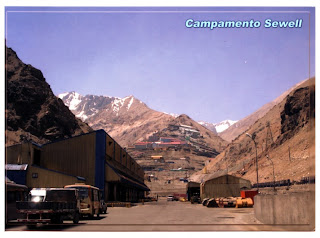It was great to meet Daniel www.postcrosing.com/user/DanielD in
and continue with our journey. I have been trying to contact my dear friend Mari www.postcrossing.com/user/msarceda in
Perhaps she is really busy at work again.
Well, since we are behind schedule already, lets not waste any more time and move on to
This Chilean region is famous for its extraordinary sceneries teeming with lakes, rivers, meadows, native forests, and volcanoes..
No, we are not here for the Music Week Festival; we are going to visit the
It was built as a tribute to the German immigrants who arrived in the area and, with much effort, gave their name and surname to these humid and rainy lands.
The initiative was supported by the government of
lake and is divided into five typical constructions, all of them made of wood and tiles and distributed in the same way as in the old estancia shells.
They have very beautiful gardens with hundred-year-old trees. It is like travelling in a time machine. A descendant of these colonists is in charge and engraved our names onsmall horseshoes. ;-)
We left this quaint place for
Did you know that in 1960,
The guys were hungry as usual...and we indulged in a delicious seafood buffet lunch on board the riverboat:
We said goodbye to Alexis and .....Sita and Nopi feel like they are going into withdrawal!!! They want to see some UNESCO sites.....OK my friends, lets go.
Situated at 2,000 m in the Andes, 60 km to the east of Rancagua, in an environment marked by extremes of climate, Sewell Mining Town was built by the Braden Copper company in 1905 to house workers at what was to become the world's largest underground copper mine, El Teniente.
It is an outstanding example of the company towns that were born in many remote parts of the world from the fusion of local labour and resources from an industrialized nation, to mine and process high-value natural resources.
The town was built on a terrain too steep for wheeled vehicles around a large central staircase rising from the railway station. Along its route formal squares of irregular shape with ornamental trees and plants constituted the main public spaces or squares of the town.
The buildings lining the streets are timber, often painted in vivid green, yellow, red and blue. At its peak Sewell numbered 15,000 inhabitants, but was largely abandoned in the 1970s This mountain community defied the elements and the difficulties to prosper, the only one like it in
The mine is still very much in operation, the deepest underground copper mine in the world. The products are Blister, Fire-refined copper, Electro-won cathodes, and Molybdenum concentrate.
Next stop,
We decide to take the cable car up to Cerro San Cristóbal, a hill that rises 880 m and about 300 m above the rest of
Wow, just look at that spectacular view of
We are now making our way to our final destination in
Nicknamed "The Jewel of the Pacific", Valparaíso was declared a world heritage site based upon its improvised urban design and unique architecture.
Oh, you should just see the gleeful looks on Sita and Nopi's faces....another UNESCO site!!
The colonial city of
It is conducive to maze-like strolls and rides on the funicular, and its natural history, fine arts and maritime museums are justly famed.
We met Sita's friend in Muelle Prat, the recently redeveloped pier, which is now a lively market area and she told that the most interesting part of
We enjoyed our Chilean adventure but everyone is slightly exhausted after 36 days of travelling...
Where to next ? I am going to contact Mariana once again, hopefully we will catch up with her in Argentina;-)





No comments:
Post a Comment